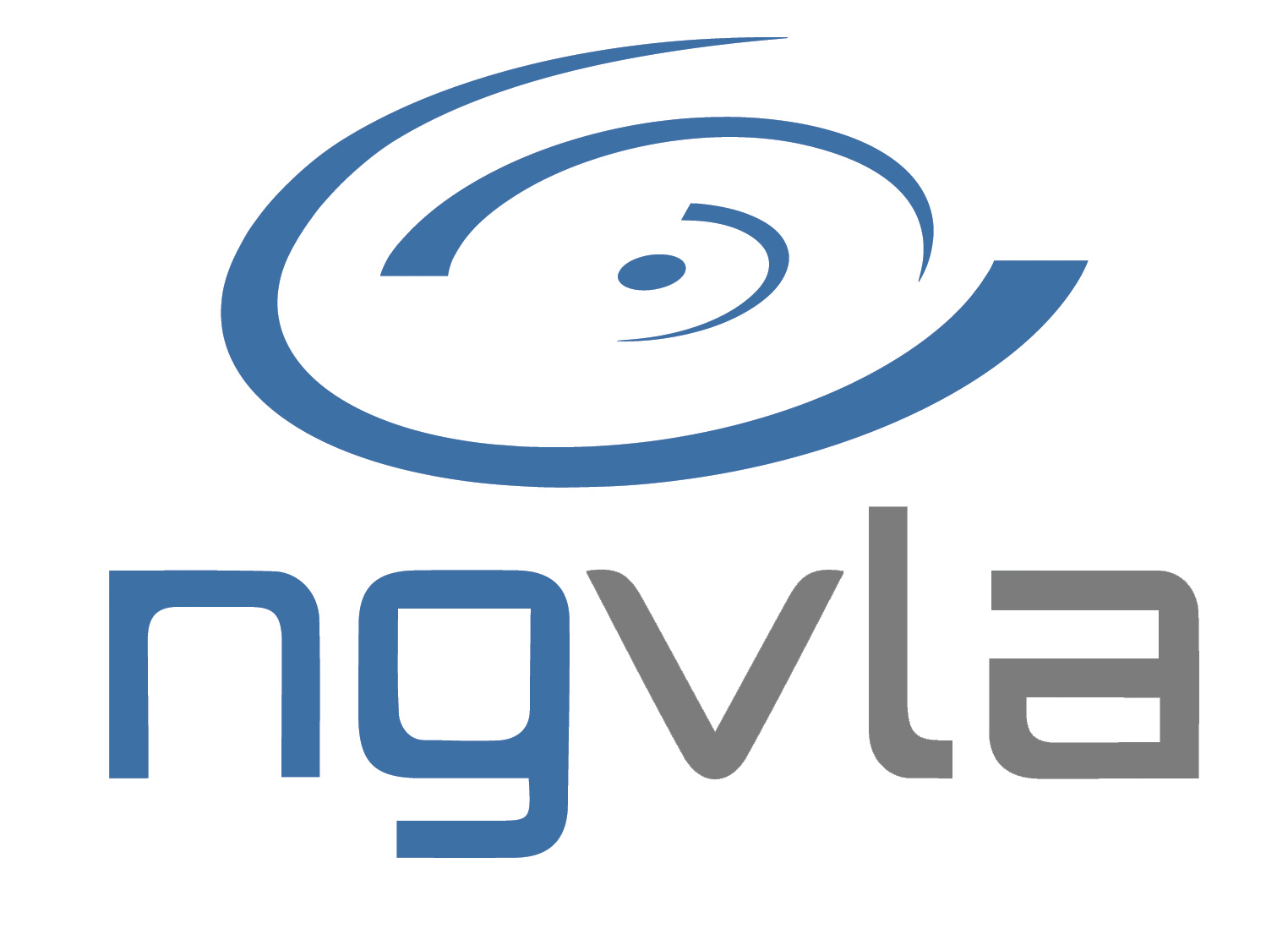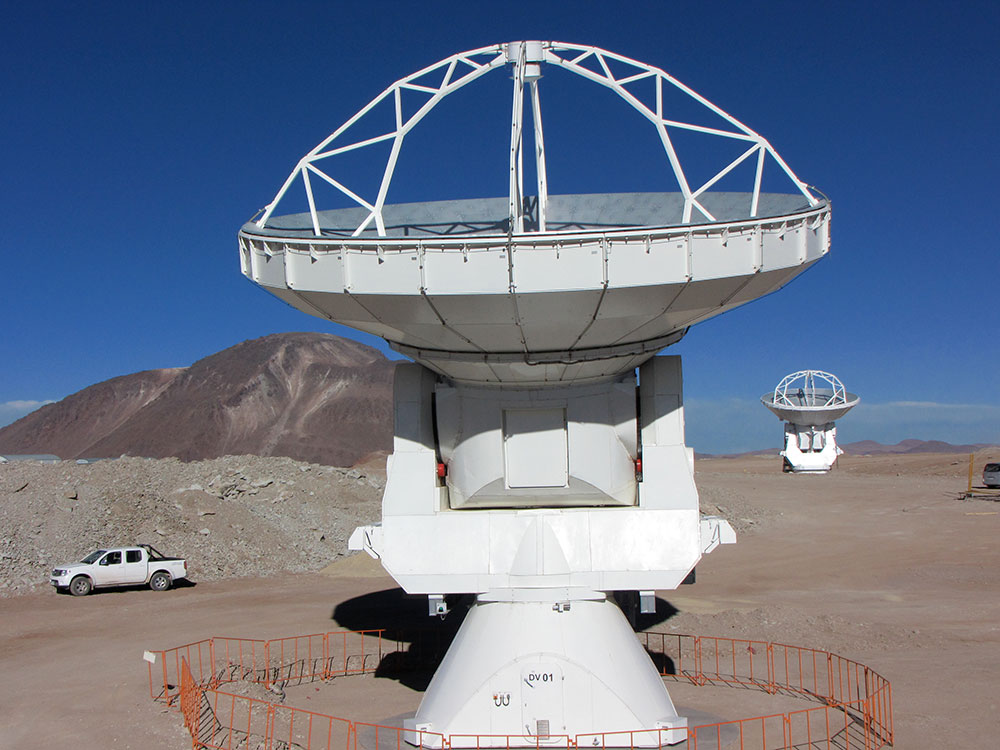NRAO eNews
Volume Vol#, Issue Iss#
Day# Month# Year#
NRAO eNews
Volume Vol#, Issue Iss# • Day# Month# Year#

Upcoming Events

Jansky Lecture: Dr. Anneila Sargent
Dec 5, 2019 | Charlottesville, VA
Honolulu AAS Events


Space VLBI 2020: Science and Technology Futures
Jan 28 - 30, 2020 | Charlottesville, VA

The ALMA 2030 Vision: Design Considerations for the Next ALMA Correlator
Feb 11 - 13, 2020 | Charlottesville, VA

Detecting Extraterrestrial Technologies and Life
Feb 15, 2020 | Seattle, WA

35th New Mexico Symposium
Feb 21, 2020 | Socorro, NM

Jansky Lecture: Dr. Anneila Sargent
Feb 21, 2020 | Socorro, NM

Compact Objects and Energetic Phenomena in the Multi-Messenger Era
Jul 14 - 16, 2020 | Saint Paul, MN
ngVLA Project News

The Scientific Quest for High Angular Resolution
On 7 January 2020, the NRAO and the ngVLA Project will convene a Special Session on The Scientific Quest for High Angular Resolution at the American Astronomical Society winter meeting in Honolulu, Hawaii. This Special Session will highlight recent scientific breakthroughs enabled by imaging at high angular resolution. It will feature a session of invited oral presentations from 2:00 - 3:30 p.m. local time, plus an associated day-long poster session with contributed presentations. Submissions of poster abstracts have closed. In the coming weeks, Joan Wrobel will connect with poster presenters to offer ngVLA-themed templates and assistance with poster printing and shipping.
ngVLA Mentioned in 450+ Publications
Since 2015, the acronym ngvla has appeared in over 450 publications indexed in the SAO/NASA Astrophysics Data System. This metric quantifies the remarkable role of the scientific and engineering communities in advancing the ngVLA concept.
Compact Objects and Energetic Phenomena in the Multi-Messenger Era
On 14-16 July 2020, the NRAO and the ngVLA Project will convene a science conference titled Compact Objects and Energetic Phenomena in the Multi-Messenger Era in Saint Paul, Minnesota, USA. Pre-registration is open. SOC co-chairs are Nicole Lloyd-Ronning (LANL) and Tom Maccarone (Texas Tech University). A diverse and exciting group of invited speakers has been announced. Registration and abstract submission will open 1 December.
The ALMA2030 Vision: Design Considerations for the Next ALMA Correlator

A meeting to discuss considerations for the design of the next ALMA correlator will be held in Charlottesville, Virginia February 11-13, 2020.
The purpose of this meeting is to bring together experts on the ALMA system and modern digital correlator design in order to:
- discuss ALMA design requirements for the next generation ALMA correlator that enables the ALMA2030 vision;
- share pros and cons of recent and currently under design correlator architectures; and
- identify challenges for implementing and deploying a new ALMA correlator.
Ultimately we hope this meeting encourages and informs the submission of viable designs for the next ALMA correlator in the near future.
Registration opens November 12, 2019! Visit the conference website for more information.
ALMA Program News

ALMA (ESO/NAOJ/NRAO), Alvaro Quintana and Jose Olivares
Two telescopes at the 5000m Array Operations Site achieved first ALMA fringes on 21 October 2009.
[click to enlarge]
Cycle 7 Observing
The current ALMA configuration is approximately C43-3 (0.5 km maximum baseline, 100 GHz beam 1.4 arcsec). Ten years ago, on Monday, 21 October 2009, ALMA achieved its first fringes with two antennas at the 5000m elevation Array Operations Site By the end of November 2019, ALMA will contract to its most compact configuration. Just after the tenth anniversary, ALMA briefly moved to a reduced operations level to ensure employee safety during a State of Emergency declared by the government of Chile. Operations at the site resumed on 28 October, after that State of Emergency was lifted.
Fourth ALMA Science Conference
Two hundred thirty-five scientists attended the ALMA Science Conference in Cagliari (Sardinia, Italy) on 14-18 October 2019, the fourth major science conference since the beginning of operations. This latest conference featured 220 talks and posters covering ALMA results from the Sun to the Era of Recombination. The First ALMA Science Conference – Science with the Atacama Large Millimeter Array (ALMA) – was held twenty years ago at the Carnegie Institution of Washington on 6-8 October 1999 (ASP Conference Series, Volume 235).
AAS – Honolulu Special Session
On Monday, 6 January 2020, from 2:00 - 3:30 p.m., the NRAO will convene a Special Session titled Breakthrough Science with the Atacama Large Millimeter/submillimeter Array featuring results from ALMA Large Programs and other related science, at the AAS winter meeting in Honolulu, Hawaii. The speaker list includes: Sean Dougherty, Fabian Walter, Eva Schinnerer, Dan Marrone, Ilse Cleeves, and Sean Andrews.
Space VLBI Science Conference Announcement

Registration and abstract submission are now open for Space VLBI 2020: Science and Technology Futures, which will be held 28-30 January 2020, in Charlottesville, Virginia and will be second meeting in The Future of High-Resolution Radio Interferometry in Space series. Please note these important deadlines:
| Oral Abstract Submission Deadline | 22 November 2019 |
| Poster Abstract Submission Deadline | 8 January 2020 |
Space VLBI 2020 will focus on mission concepts and supporting technology developments to enable the highest angular resolution observations at centimeter and shorter wavelengths (30+ GHz observing frequencies).The meeting will highlight recent scientific advances and developments in the motivations for future space-based Very Long Baseline Interferometry (VLBI) and the resulting technical requirements and challenges. Of particular interest are contributions in areas such as:
- Science at extremely high angular resolutions;
- Apertures size, and performance for space apertures;
- Receiver and detector technology status and performance;
- Data volume and transport;
- Clocks and synchronization;
- Orbital dynamics and u-v plane coverage;
- Orbit determination;
- Data processing for correlation and analysis;
- VLBI simulations for science cases;
- Optimization for mission concepts; and
- Concepts (e.g., one large aperture vs. many small apertures in space).
There is also interest in exploring the opportunities made available by recent innovations for VLBI and in space missions.
Please visit the conference website for registration, abstract submission, and additional information. Questions should be addressed to SpaceVLBI2@nrao.edu
Recent Media Releases
|
ALMA Resumes Regular Operations |
|
|
Gas ‘Waterfalls’ Reveal Infant Planets around Young Star |
|
|
Going Against the Flow Around a Supermassive Black Hole |
Career Opportunities
ALMA Postdoctoral Fellows: The Joint ALMA Observatory (JAO) is actively recruiting for postdoctoral fellowship positions to join the ALMA science operations group in Santiago, Chile. ALMA Postdoctoral Fellows will be appointed for a period of three years and will spend 50% of their time dedicated to their personal scientific research. The remaining time will be spent in support of ALMA operations, including observing at the ALMA Operations Support Facility near San Pedro de Atacama, Chile for hands-on interaction with the telescope. The goal of these fellowships is to offer early career scientists the opportunity to enhance their research programs through involvement in science activities and interactions with experienced staff at the world's foremost observatory for submillimeter astronomy.
- Applicants submitting their candidacy to AUI/NRAO are invited to submit for consideration at the AUI/NRAO careers page. Reference letters must be sent by electronic mail to resumes@nrao.edu by December 16, 2019.
- Applicants submitting their application to ESO are invited to apply online at https://jobs.eso.org/.
- Applicants submitting their application to NAOJ are invited to apply via e-mail to apply-alma-JAOFellow20191216@alma.mtk.nao.ac.jp
Deadline for receipt of applications is December 16, 2019.
From the Archives
Ellen Bouton

[click to enlarge]
About this month's photo: NRAO chose the Rohr Corporation in Chula Vista, California, to build the 36 Foot Telescope, and Rohr decided to fabricate the surface in one piece rather than use multiple panels, a process which proved challenging. The surface was finally completed in late February 1966 and the 13,000 pound, 36 foot dish was transported by road from the Chula Vista factory to the base of Kitt Peak, accompanied by California and Arizona State Police escorts. The 425-mile trip took ten days and the entire Rohr convoy included eight truckloads of telescope components. Due to problems and delays in completing the dome to house the telescope, concerns about the impact of inclement weather conditions on top of the mountain, and ongoing repairs to the road up the mountain, the dish structure remained at the bottom of Kitt Peak for many months – under guard lest it be stolen or used as target practice by Arizona locals. In this photo, taken by John Hungerbuhler, the dish makes its way slowly from California to Tucson.
From the Archives is an ongoing series illustrating NRAO and U.S. radio astronomy history via images selected from our collections of individuals' and institutional papers. If readers have images they believe would be of interest to the Archives, please contact Ellen Bouton.

